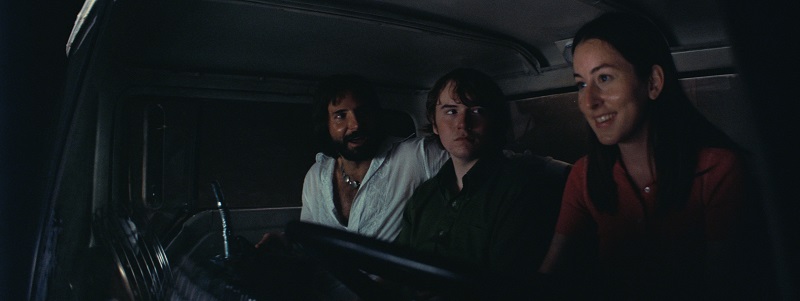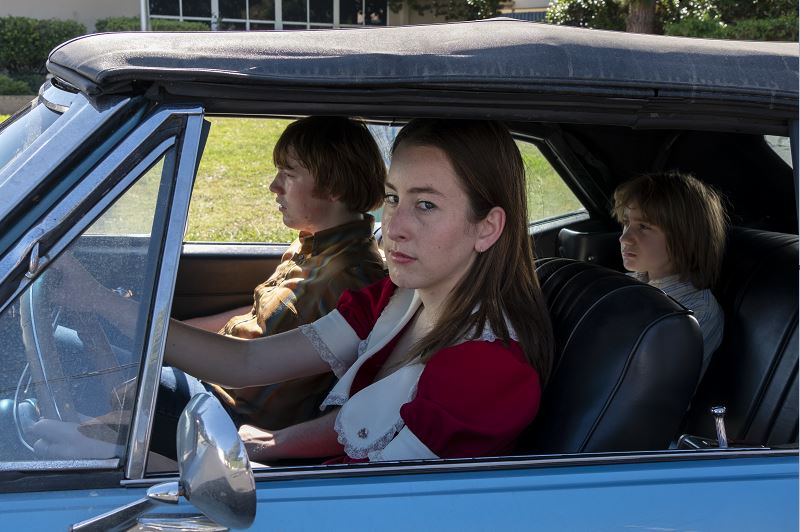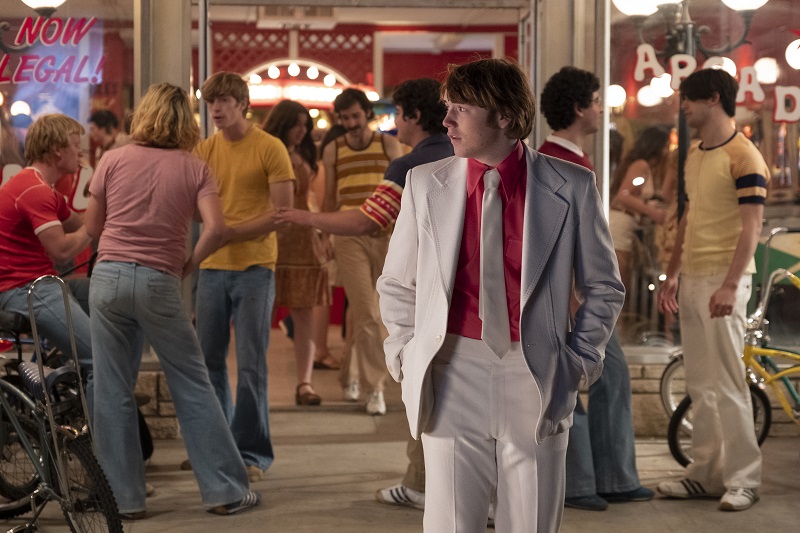Paul Thomas Anderson has headed back to the Valley of Los Angeles for his Licorice Pizza. But his latest Valley tale is nothing like his masterpiece Boogie Nights. Actually, both are masterpieces, so there’s that.
Whereas Boogie dealt with a “family” at the center of the pornography revolution that was overtaking the Valley outside Los Angeles during the 70s and 80s. Meanwhile, Licorice Pizza is at its core, an old-fashioned Hollywood romance. The story just happens to take place in areas such as Encino of 1973. Change is happening all around and those winds of change swirl like an El Nino.
It finds two of the most unlikely protagonists meeting—Alana Haim’s Alana and Cooper Hoffman’s Gary. She is in her mid-to-late-twenties, and he is 16 going on 32. Within 15 minutes of Anderson’s latest multi-faceted, multi-pronged web, one can keenly wrap your “movie” sense around this work of art. It’s like Boogie Nights in that it transcends the medium of film to reflect the culture it spotlights.
Capturing lightning is no easy task, much less twice. Yet, these two films are incredibly different beasts. They share a landscape, a musical tone, and of course, a storyteller.
Literally, as the film commences, Gary is standing in line outside (so California!) at his high school, being led by Alana to his big life passage moment that seems more like an afterthought than a highlight to those who employ Alana. By the close of this encounter (and life passage instant), he has asked her out on a date, without actually asking her on a date. It illustrates Gary’s charm, smoothness, and above all else—confidence.
While at dinner, we learn much about these two. He acts on a hit television show, his mother runs a publicity company he owns whose mission includes pushing his acting career. She, on the other hand, is not seeking to apprentice herself to a full-time photographer. It’s just a job. These two have chemistry like gangbusters. Yet, Anderson wisely demonstrates this fact slowly, almost spoon-feeding the audience tasty morsels. One thing’s for sure: He slyly adores her, while she thinks he’s young, and well, young.
Over the span of time, they (and we) discover that there is more to their relationship than friendship, business, and a general attraction that is undeniable to anyone that knows but them. Gary is able to pour his heart, attention, and funds seemingly and effortlessly into another business. After exposure to something that would help define an aspect of the “Me Decade,” waterbeds!
That leads us to a hurricane of a performance that if it’s not nominated for Best Supporting Actor, it will be a cinematic crime equal to that of denying Goodfellas Best Picture and instead awarding Dances with Wolves. We’re talking about the explosion that is Bradley Cooper’s turn as hairstylist turned movie producer Jon Peters, who works in his girlfriend’s name— Barbra Streisand —in the most comically name-dropping way. He is a firecracker, to put it mildly. The way that he worms his way into Gary and Alana’s collective lives for a short stretch there is ingenious and inspired screenplay writing.
The thing is, Licorice Pizza is about so much more, just like all Anderson’s films. It is a slice of life in this part of America at this point in time and it is filled with characters who embody that time and place in the most piercingly pure manner. This is Hollywood, after all. So, some of the extraneous souls who inhabit this world, have a distinct connection to the movie biz. For example, Sean Penn plays filmmaker Jack Holden. How Alana winds up on the back of his motorcycle and how Gary happens to be on a date himself at the same Valley-based establishment not only gives us more of that “feel” of that era but pushes the relationship of our lead protagonists. It’s the craziest scene, but it also is among the film’s most resonantly ingratiating.
Haim is remarkable. As she plays Alana, it is easy to see why this woman would hang around with Gary and “his fellow 15-year-old friends.” A founding member of HAIM (her bandmates play her cinematic sisters!), the rocker illustrates a penchant for drama and an uncanny ability to say as much with her mouth as she does any other part of her body that is her acting toolbox. She makes her big-screen acting debut and the camera loves her. The largest aspect of that previous statement working so well is Haim is aware of how to use the camera to push her character’s agenda. Whatever she works on next, consider The Movie Mensch among the first to be in line. Also, sidenote… Anderson has directed a slew of HAIM videos—seek them out!
Her partner in crime, Hoffman, impeccably works opposite Haim and one gets heavily invested in the romantic seeds and the constant evolution of their growth or lack thereof. The actor has a history with Anderson, i.e., his father—the late Philip Seymour Hoffman—who appeared in the filmmaker’s The Master and Boogie Nights.
How Hoffman firmly is a 16-year-old boy while still blazing a trail as an actor and entrepreneur are transcendent. How Anderson utilizes one of his muses is commanding, to put it mildly. You cannot take your eyes off of Hoffman. Despite his youth, thanks to the actor’s gifts, one resolutely knows that his Gary is going places.
Anderson covers so much and never hits us over the head with what he’s trying to say. There’s a subplot involving a councilman running for mayor and how secrets are sadly not the answer to those who romanticize the past. How Haim volunteers and then provides help in a way that reverberates throughout Licorice Pizza is otherworldly. It’s an example of how everything with Anderson is on purpose. There isn’t a wasted word, frame, or even song.
The director’s penchant for choosing soundtrack songs continues his G-d-given gift with his work on Licorice Pizza. He not only chooses songs that encapsulate the time period but intensely contributes to that “feel” that is all-important for period pieces. What else Anderson does is select songs that add layers to the emotive tether between his audience and his actors.
Anderson captures time like nobody else. The audience is there. It’s not simply the music. Music is a crutch to give the filmmaker a feel for the time. There is something about what Anderson achieves with his actors, the production design team, costumes, hair and makeup and everyone else who added authenticity to the 1973 reality of Licorice Pizza deserves credit for crafting another Anderson written and directed splendor in every sense of that word over the course of the most escapist and entertaining 133 minutes of your year.
Grade: A+





